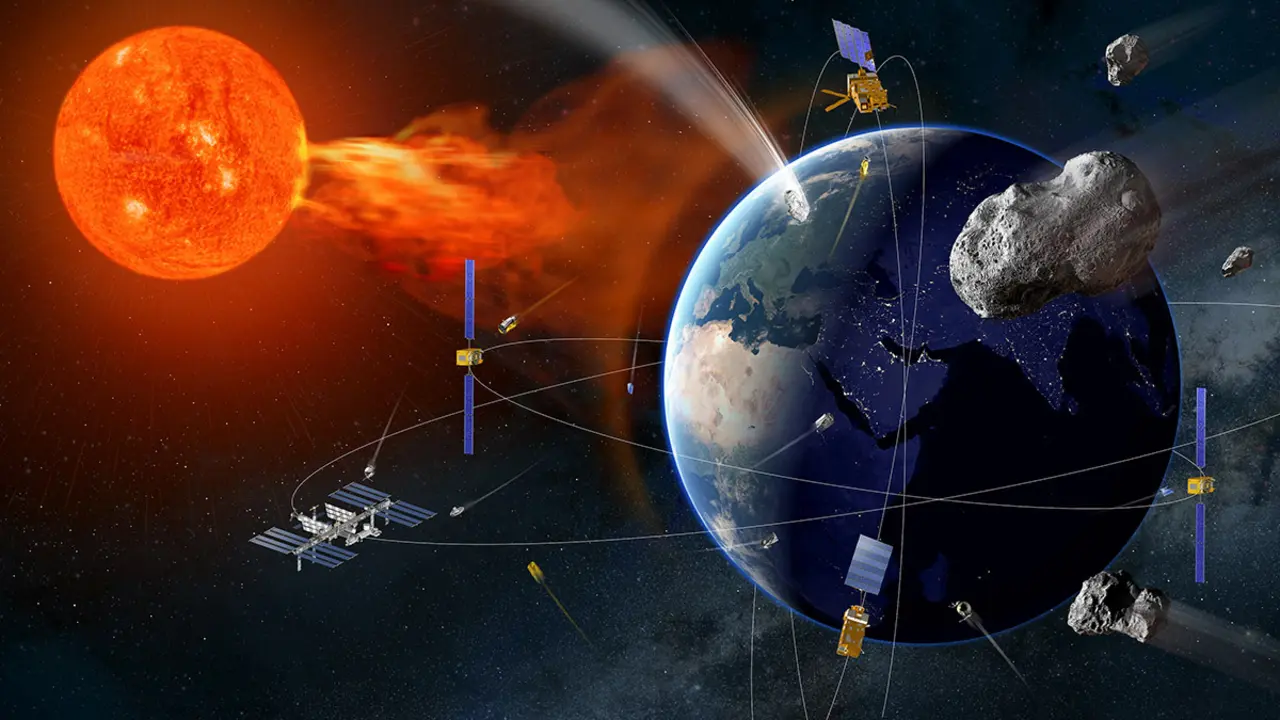Hisdesat builds a large satellite control centre with an eye on constellations

With the pomp of a big occasion, the Spanish strategic services company Hisdesat has inaugurated its new Satellite Control and Operation Centre. It is a large facility whose primary purpose is to be the main tracking station for the Spainsat New Generation or Spainsat NG-I and II secure communications satellites, whose flights into space are scheduled to take place on a Falcon 9 rocket from Cape Canaveral at the beginning and end of 2025, respectively.
The complex is located in the municipality of Hoyo de Manzanares, some 37 kilometres north of Madrid. It is the site chosen by Hisdesat to locate its huge hub for liaison with outer space spacecraft, with antennas deployed to send and receive data on health status, in-orbit position and telecommunications with the two Spainsat NGs. Both are intended to relieve and enhance the capabilities of Xtar-EUR, launched in 2005, and Spainsat, in orbit since 2006, and to provide service for at least the estimated 15 years of their mission.
The developed area of land on which the facilities are located occupies a total surface area of 150,000 square metres and is located on the edge of Hoyo de Manzanares bordering Colmenar Viejo. The neuralgic building around which the entire control and monitoring station revolves combines ‘beauty and monumentality’, said Hisdesat's president, Admiral Santiago Bolíbar, at the inaugural ceremony held on 29 November, which was presided over by the Secretary of State for Defence, Amparo Valcarce.
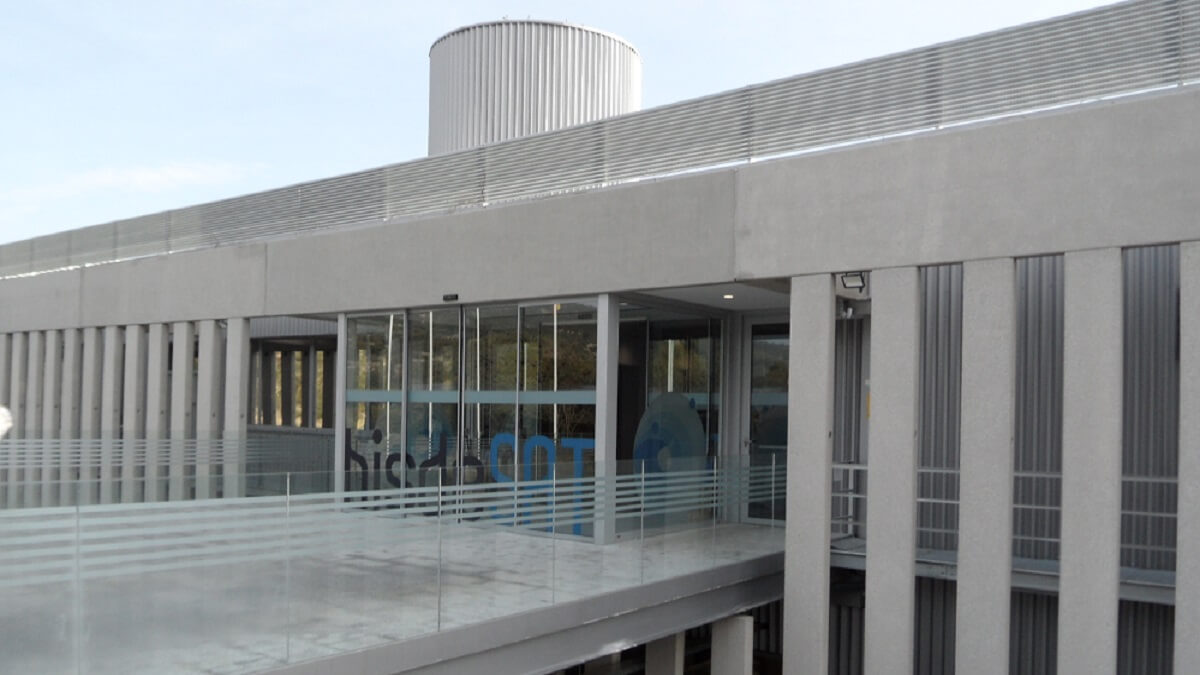
The building was erected by the construction company Ferrovial. With a total of 4,400 square metres and more than enough space, ‘it has unique characteristics and houses the key facilities’, according to the company's general manager, Miguel Ángel García Primo. It is conditioned from a ‘multi-domain point of view, having been conceived to manage satellites positioned in any orbital position, whether they are in low, medium or geostationary orbits’. This vision suggests that the company is on the way to expanding its capabilities and its market, and aspires to deploy a constellation of small satellites in the not-too-distant future, which is a general trend in the sector.
The company's chief executive explained that the two Spainsat NG satellites are ‘very advanced and complex’ twin satellites. They will be used by the Spanish Ministry of Defence, but ‘also by the European Commission, the Atlantic Alliance and allied and friendly countries such as the United States, Portugal, Greece, Norway and even the Netherlands, to whose armed forces we offer secure strategic communications’.

Why Hoyo de Manzanares and not Torrejón?
Hisdesat is aware that each organisation or nation has ‘its own and different systems of confidential classification of information, so the centre we have designed responds to that particularity’. The central building has two floors. The first floor houses the reception, engineering area, meeting rooms and offices. The lower floor is subject to ‘very strict and restrictive security requirements, where the degree of secrecy of the information that each client has requested governs,’ García Primo stresses, ‘especially those imposed by NATO’.
How do the satellites work? As they are highly complex machines defined by software, this means, explains the Hisdesat director, ‘that we can change their configuration and redefine it according to the changing requirements imposed by our customers’. Therefore, ‘our technicians are trained to change from one configuration to another in a very short space of time’. However, the centre is not yet operational. It will be when GMV, which is responsible for most of the ground segment development, completes the integration and commissioning of all the systems and subsystems responsible for managing services and communications with SpainSat NG in its X, military Ka and UHF electromagnetic bands.
What do customers usually ask Hisdesat for? The most common request is to modify the size of the signals, their quality and the geographical locations on the ground. ‘This, with the very new and advanced active antennas that we have, requires for each change to have to modify the algorithms that optimise the configuration of the antenna payload. And these requests ‘have to be attended to and completed 24 hours a day, which is also the Centre's operating hours’, García Primo points out.
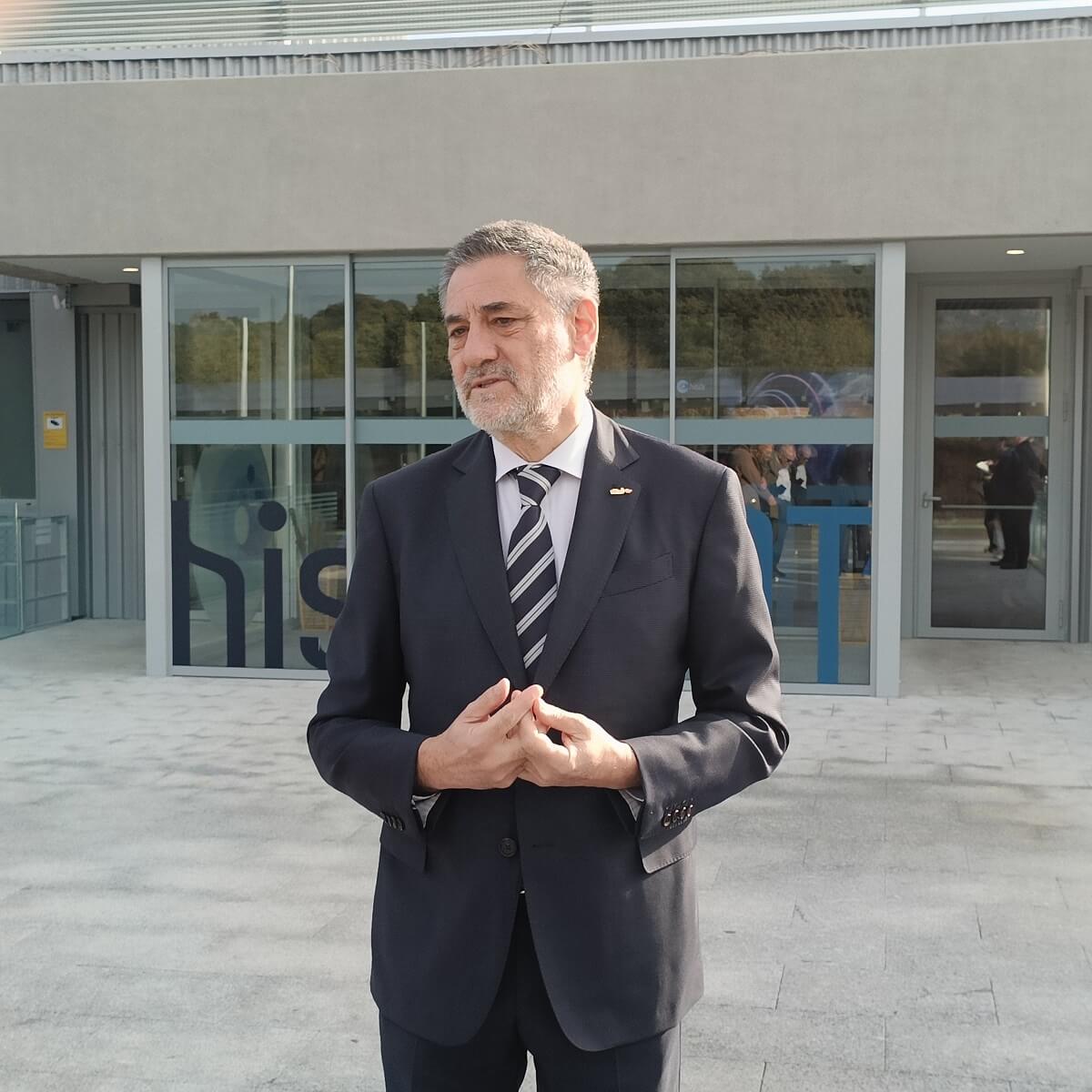
In Hoyo de Manzanares, requests for changes are received and the multiple orders to be given to the satellites are defined on the basis of these requests. As they operate digitally, ‘they have to be converted into something physical, which is a radiofrequency signal that is modulated, amplified and sent to the satellite’. For security and resilience reasons, they are sent out ‘on different frequencies through the antennas that we have a few metres away from the main building because, in the event of interference on one frequency, we can jump to another, another and another, until we are aware that the orders are reaching the satellite’.
Why has Hisdesat installed its control centre in Hoyo de Manzanares and not at the large air base in Torrejón, also near Madrid? García Primo replies that before selecting the site ‘multiple other locations have been sought’. Torrejón is very close to two airports, with many aeronautical and radar signals and a contaminated spectrum.
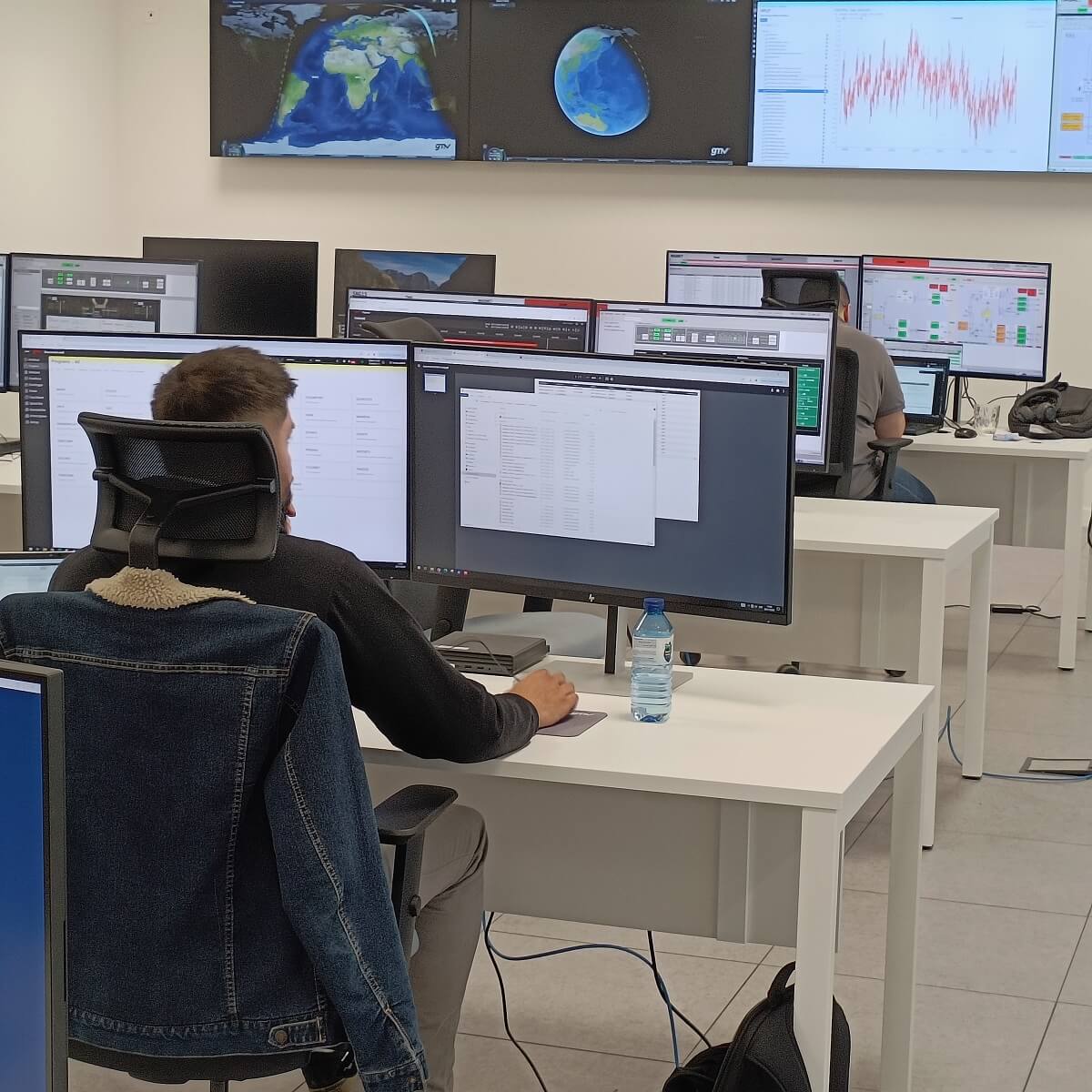
To operate its own or other satellites
On the other hand, the site on which the centre now sits ‘meets all the requirements for security and electromagnetic spectrum cleanliness in the frequency bands in which the Spainsat NGs operate’. However, Hoyo de Manzanares has an alternative site at the Maspalomas Space Station, owned by the National Institute for Aerospace Technology (INTA) and located on the island of Gran Canaria.
In addition, the site offers good visibility towards the orbital position to be occupied by Spainsat NG-I -29º East- and NG-II -30º West-, both at an altitude of 36,000 kilometres in geostationary orbit, i.e. in synchrony with the Earth's displacement. The chosen area is located on Ministry of Defence land, in an area of the El Palancar manoeuvring and firing range and in the regional park of the upper Manzanares river basin, which offers additional security and requires a great deal of attention and care for the environment.
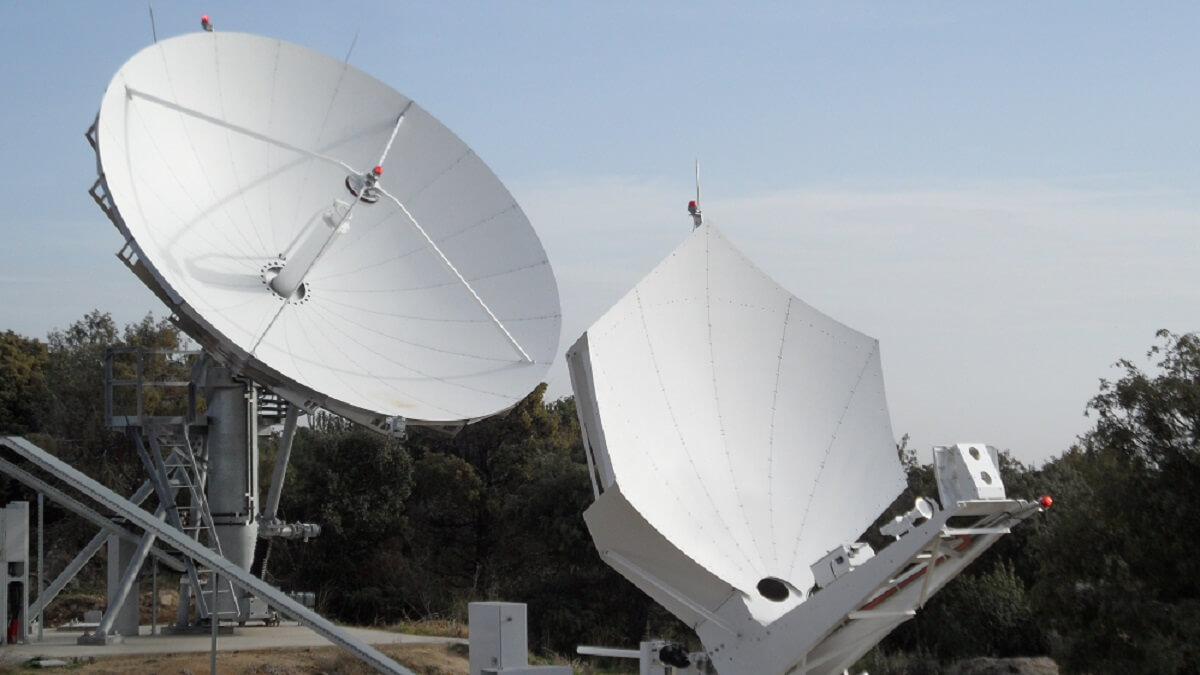
Until now, the main control centre from which Hisdesat issues operating orders and checks the status of its two veteran communications satellites Xtar-EUR and Spainsat is located at the facilities of its parent company, Hispasat, in Arganda, also in the vicinity of Madrid. However, in line with the new phase that the company is about to embark on, ‘reasons of self-sufficiency and prestige have led us to take the decision to set up our own control centre, with the capacity to operate our own satellites or those of other companies or organisations’, argued Admiral Bolíbar.
In the Secretary of State's final speech, which brought the inauguration ceremony to a close, Valcarce emphasised that Hisdesat's new facilities have been developed to ‘meet the needs of the Ministry of Defence, such as the exploitation and operation of the future SpainSat NG satellites (...), a programme that has an investment of 1,800 million euros over the next 15 years by the Ministry of Defence alone’. In his opinion, the new satellites ‘are going to boost Spain's contribution to all the satellite communications projects of the European Defence Agency and NATO’.
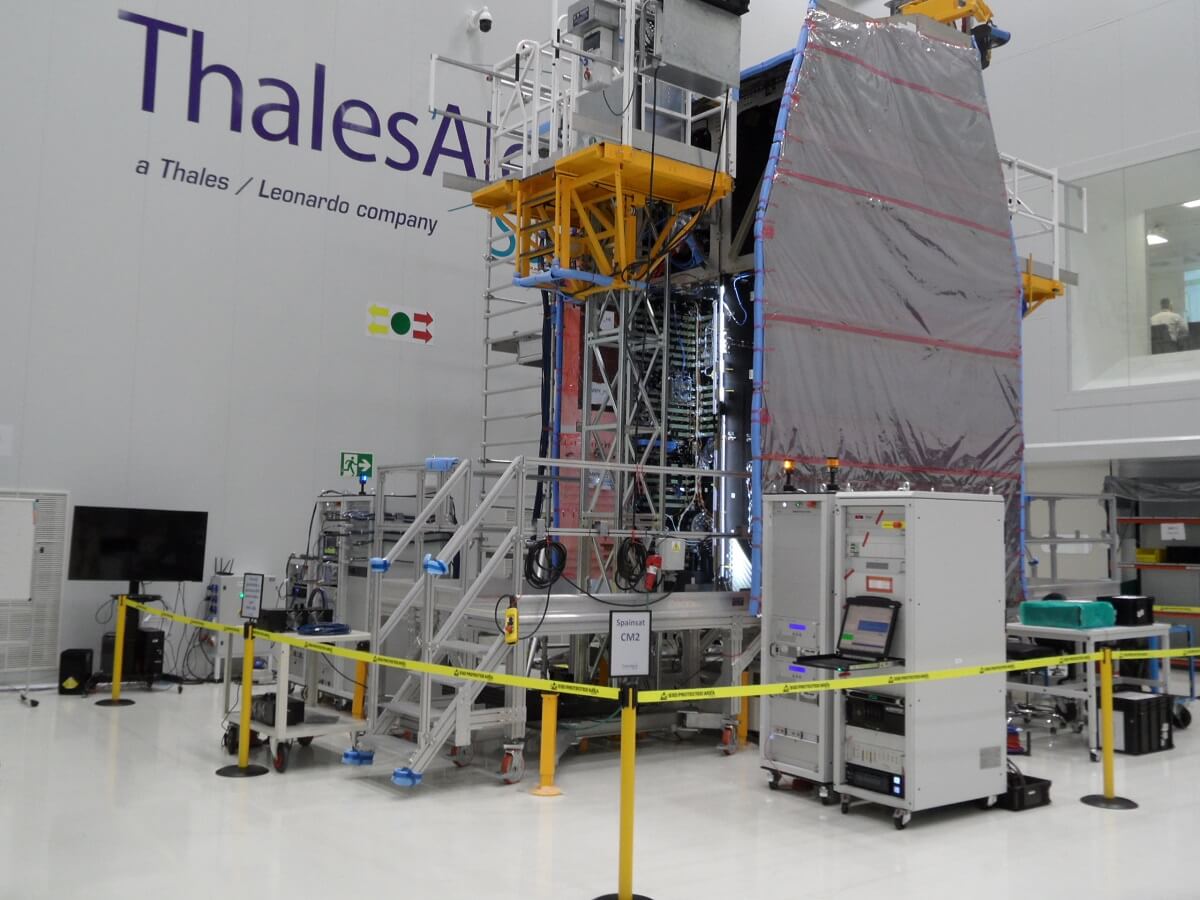
The inauguration of the complex was attended by the Air and Space Chief of Staff, General Francisco Braco, the senior military staff of the Ministry of Defence linked to space affairs, and the members of the company's Board of Directors. Also present were Air General Juan Carlos Sánchez Delgado, director of security and planning of the Spanish Space Agency; Air Colonel Alfredo Ortega, director of operations of the Department of National Security; and Pedro Duque, president of the operator Hispasat, which is Hisdesat's majority shareholder with 43%.










